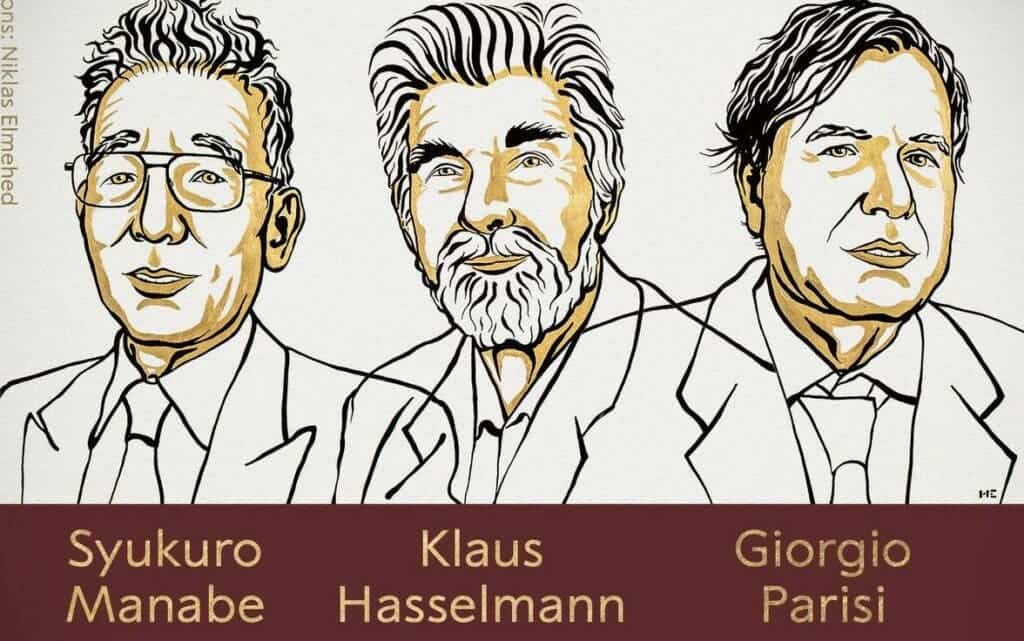German Klaus Hasselman, Italian Giorgio Parisi, and Japanese-born American Syukuro Manabe won this year’s Nobel Prize for Physics for the studies of chaotic and apparently random phenomena involved in studying our planet’s climate. It’s the second Nobel awarded this year so far, after the one on physiology or medicine, and more are expected to be announced in the coming days.

Half the prize, worth 10 million Swedish crowns (or $1.15 million), went in equal parts to Manabe and Hasselman for modeling Earth’s climate and reliably predicting global warming in 1960 and 1970. Meanwhile, the other half was for Parisi, who discovered in 1980 “hidden patterns” behind apparently random movements and swirls in gases and liquids.
“The discoveries being recognized this year demonstrate that our knowledge about the climate rests on a solid scientific foundation, based on a rigorous analysis of observations. This year’s Laureates have all contributed to us gaining deeper insight into the properties and evolution of complex physical systems,” Thors Hans Hansson, chair of the Nobel Committee for Physics, said in a statement.
Hidden patterns
All complex systems have many different interacting parts. Physicists have tried to understand the moving parts in our climate system for decades, which has proven immensely challenging. They are hard to describe mathematically because of the large number of elements that can be (at least partially) governed by chance. These components can be chaotic, with small changes in initial values that can mean big differences at a later stage.
The Earth’s climate is one of many examples of complex systems. The three Nobel winners have added significant value for the world to better understand such systems and their long-term development. Manabe and Hasselmann did work on developing climate models, while Parisi came up with theoretical solutions to a wide array of problems in the theory of complex systems.
In his work, Manabe showed in 1960 how growing concentrations of CO2 in the atmosphere lead to a higher temperature at the surface of the Earth. He developed physical models of the Earth’s climate and explored the interaction between radiation balance and the vertical transport of air masses. His work was critical to create the currently used climate models.
Ten years later, Hasselmann developed a model that connects weather and climate, crucial to understanding why climate models are reliable despite the weather being unpredictable. He created methods to identify signals or fingerprints that natural factors and human activity have on the Earth’s climate, which was later used to prove that the world’s rising temperature is due to human emissions.
Parisi was able to find previously unseen patterns in disordered complex materials, which turned out to be one of the most significant contributions to the theory of complex systems. His work opened the door to understanding and describing many different complex materials and phenomena in physics and also in other areas, such as mathematics, biology, and neuroscience.
This year’s Nobel’s
This is the second Nobel that has so far been awarded this week, after US scientists David Julius and Ardem Patapoutian were awarded the prize for Medicine on Monday. They discovered receptors in the skin that sense temperature and touch, which could allow scientists to find new ways to treat pain for many disease conditions.
Created by the Swedish inventor and businessmen Alfred Nobel, the awards have been given since 1901 with just a few interruptions due to the two world wars. This year there was no banquet in Stockholm, Sweden due to Covid-19, just like last year, which means all the winners are receiving their medals and diplomas in their home countries.
The physics Nobel has usually taken a center stage, with awards given to major breakthroughs in the way we understand the universe. Previous winners include the husband-and-wife team of Marie Curie and Pierre Curie and Albert Einstein. Last year, Roger Pensore, Reinhard Genzel, and Andrea Ghez won for their findings on black holes.









